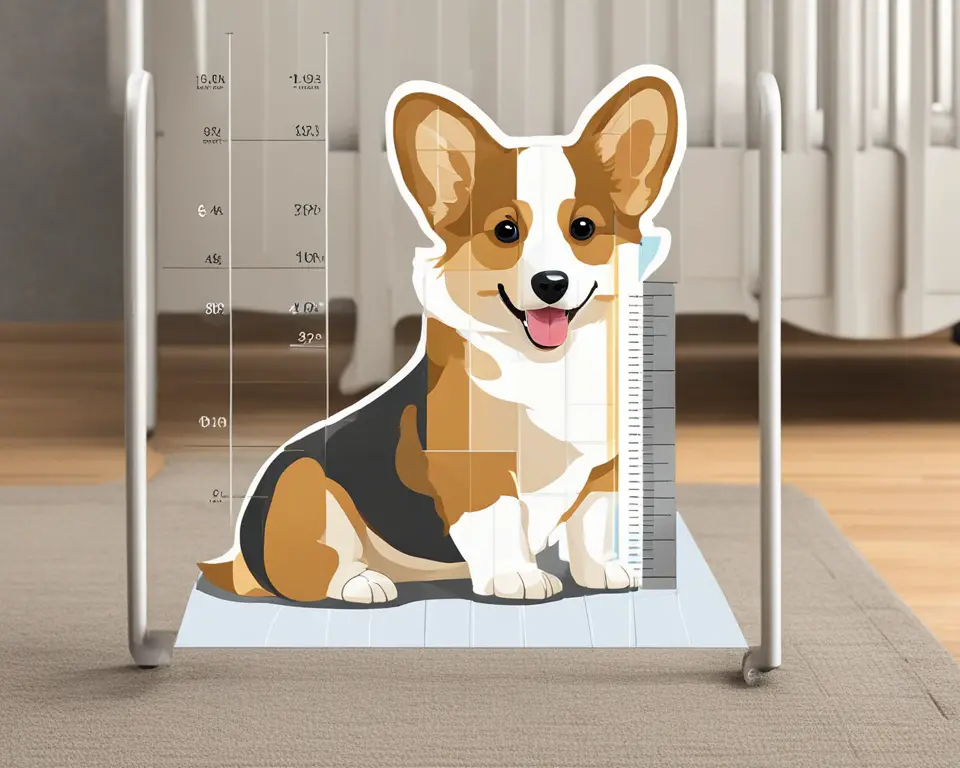Corgis can make great pets, whether they’re the Pembroke or Cardigan variety. They’re affectionate and tend to be good with other dogs and children. They don’t shed hair, drool, or bark much, and they’re relatively easily trained.
What’s not to love? Despite their lovely temperament and pleasant characteristics, there are some health problems that Corgis are prone to, perhaps exacerbated by overbreeding to encourage their short stature and easily recognizable body shape. So, do Corgis have hip problems?
Corgis are regularly affected by hip problems, and bad hips can cause them pain even when they are less than a year old. Not every Corgi will develop bad hips, though, and, thankfully, breeders are taking measures to reduce the risk to future generations.
In this article, we’ll look at the hip problems that Corgis are prone to and how they can be managed. We’ll also discuss what breeders are doing to reduce the risk of hip problems in Corgis.
Let’s get started!
Do Corgis get hip dysplasia?
The main reason for bad hips in Corgis is hip dysplasia, and this genetic condition can sadly be passed down from parents to puppies. Other breeds that are affected by hip dysplasia include Labradors, Golden Retrievers, German Shepherds, Great Danes, and St Bernards.
As well as hip dysplasia, Corgis are also predisposed to elbow dysplasia, which causes similar joint problems in their elbows.
What is hip dysplasia?
Hip dysplasia refers to the poor conformation of the hip joint. The hip joint is a ball and socket joint, where the ball at the head of the femur sits within a socket in the pelvis known as the acetabulum. In a healthy dog, the socket covers the head of the femur snuggly, allowing free and smooth movement while remaining stable.
In dogs with hip dysplasia, the head of the femur might be flattened in areas rather than forming a perfect ball shape.
The acetabulum may also be shallower than it should be, preventing the femoral head from sitting securely. In extreme cases, the hip joint may be so unstable that the joint is permanently or regularly dislocated.
What causes hip dysplasia in Corgis?
Hip dysplasia is a genetic condition, so there’s more chance of a Corgi puppy developing hip dysplasia if their mother or father were affected. As the Corgi breed developed, breeders selectively bred for physical traits like short limbs and a deep chest.
Over time, this makes the gene pool smaller as the most visually desirable dogs are used for breeding. Unfortunately, less visible genetic health problems have become more common as a consequence.
When does hip dysplasia develop?
It’s hard to spot the signs of hip dysplasia in puppies, even with an x-ray, because the bones are still growing rapidly, and the conformation can change.
However, affected dogs can develop symptoms from six or seven months old onward. It’s most common for dogs to start to show signs from around 12 months of age.
What symptoms does hip dysplasia cause in young Corgis?
Typically, hip dysplasia causes hind limb lameness. The limp might be intermittent, worse during a long walk, and regularly resolved or improved after rest.
However, a limp due to hip dysplasia usually recurs regularly despite improving on rest and anti-inflammatory medication or in more severe cases.
You might find that it fails to improve much at all. Aside from limping, your dog might seem awkward or uncomfortable when they posture to pass urine or feces, they might be hesitant to jump or use the stairs, and they might sit frog-legged or with one leg out to the side.
What symptoms does hip dysplasia cause in middle-aged Corgis?
It’s not just adolescent dogs that are affected by hip dysplasia. If a young dog develops hip dysplasia, it will show signs of pain for a while, around a year or so.
In that time, the muscles and soft tissue surrounding the unstable joint will scar and fibrosis, eventually stabilizing the joint. This is why young to middle-aged adult dogs with hip dysplasia can become pain-free for a few years.
Although they might have a reduced range of motion in the joint and an awkward gait, they tend to be comfortable.
What symptoms does hip dysplasia cause in older Corgis?
Sadly, even Corgis with hip dysplasia who have been pain-free for a long time are likely to develop arthritis later in life. In fact, in dogs with hip dysplasia, osteoarthritis sets in much earlier than in a healthy dog.
Note: If your Corgi has arthritis, you might notice them slowing down, seeming stiff, struggling to get outside to pass urine and feces, or seeming weak and wobbly on their hind legs.
They might be persistently lame or painful when you stroke them. Over time, their muscles may waste, leaving them looking thinner on their thighs and rump.
How do you prevent hip dysplasia in Corgis?
In general, hip dysplasia in Corgis is being managed by breeders using hip scoring. X-rays can be taken of male and female dogs before they are used for breeding to ensure that they do not have hip dysplasia and that their hip conformation is good.
This reduces the risk of the condition being passed down, and in time, hip dysplasia should become far less common in the breed.
What can you do to stop your dog from developing hip dysplasia?
Sadly, you can’t prevent hip dysplasia in a puppy. If they are genetically determined to develop the condition, they will.
However, the best thing you can do is be vigilant in monitoring your puppy for symptoms like intermittent or persistent limping and take them to see the veterinarian if they show signs. Your veterinarian will be able to suggest ways to keep your Corgi pain-free and reduce the risk of arthritis later in life.
What is the treatment for hip dysplasia in young Corgis?
If your Corgi is young when they show signs of hip dysplasia, the veterinarian may offer anti-inflammatory and pain relief medications to help them stay comfortable. They might also recommend weight loss, controlled exercise, physiotherapy, and joint supplements.
They might offer radiographs or an assessment with a specialist to see if surgical treatment is required, but medical management is usually successful.
What is the treatment for hip dysplasia in old Corgis?
If your Corgi is middle-aged or older and showing signs of pain from hip dysplasia, the same medical options and management techniques are available. However, there are also surgical options, including a surgical hip replacement or surgery to remove the head of the femur (depending on your dog’s weight).
When should you see a vet?
It’s important to seek your veterinarian’s advice if your dog is limping and doesn’t improve with rest. Similarly, if your dog’s limp keeps returning after it has seemed to improve, this could be another warning sign.
If you look out for symptoms of hip dysplasia and catch the signs early, your vet will be able to help keep your Corgi comfortable and reduce future issues.
Summary
Before we move on to the conclusion, we’ve summarized this article into a short list of key points for you to remember:
- Hip dysplasia in Corgis is managed by breeders using hip scoring.
- You can’t prevent hip dysplasia in a puppy, but you can monitor them for symptoms and take them to the vet if they show signs.
- Treatment for young Corgis includes anti-inflammatory and pain relief medications, weight loss, controlled exercise, physiotherapy, and joint supplements.
- Seek your veterinarian’s advice if your dog is limping and doesn’t improve with rest or if their limp keeps returning after it has seemed to improve.
Conclusion
If your Corgi has bad hips, it can be a real worry, especially when the prognosis of hip dysplasia means they’re likely to get arthritis sooner than expected too.
However, spotting the symptoms early and seeking the support of your veterinarian will help you manage this condition and keep your Corgi companion comfortable!
Want to learn more about Corgis?
Ready to boost your knowledge to the next level? If so, check out the articles below:
- Why Do Corgis Butts Float? The Scientific Explanation ([year])
- Do corgis have docked tails? (Ultimate Guide)
- Are Corgis Easy to Train? Everything You Need to Know!





